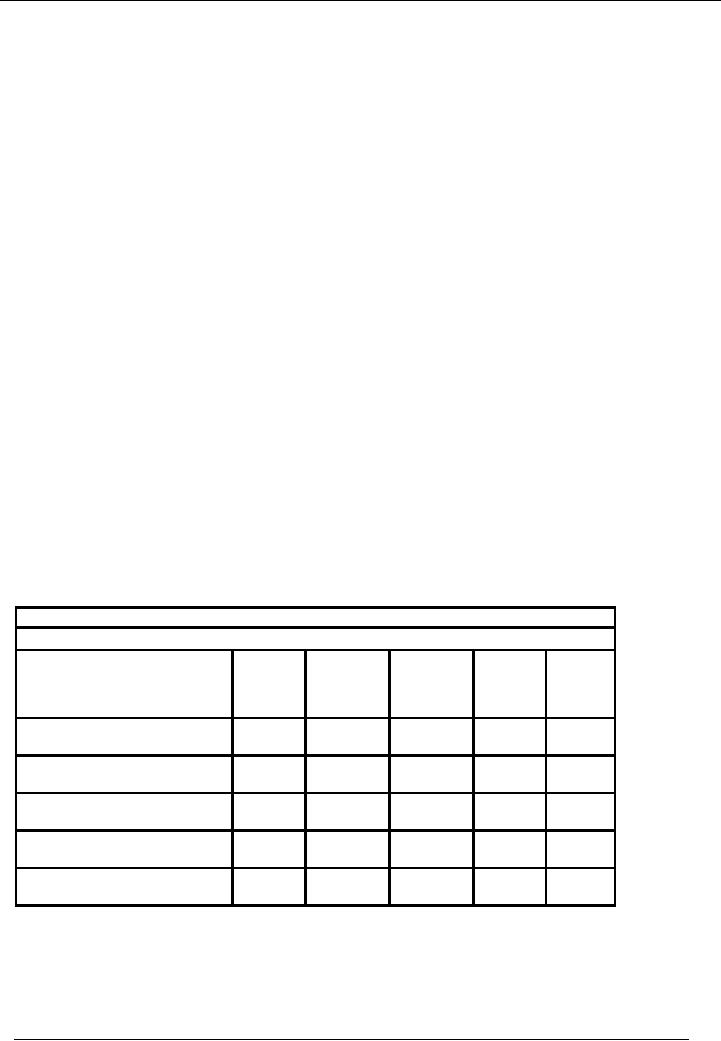 |
SHARE CAPITAL |
| << DISADVANTAGES OF A PARTNERSHIP FIRM |
| STATEMENT OF CHANGES IN EQUITY >> |

Financial
Accounting (Mgt-101)
VU
Lesson-37
SHARE
CAPITAL
�
The
maximum amount with which a
company gets registration/incorporation
is called authorized
share
capital of that
company.
�
This
capital can be increased
with the prior approval of
security and exchange
commission. This
capital
is further divided in to smaller
denominations called shares.
�
Each
share usually has a face
value equal to Rs. 10.
According to Companies Ordinance, this
face
value
can be increased but can
not be decreased.
�
The
value of share written on
its face is called face
value.
�
Shares
are issued for cash as
well as for any asset.
For example, if any member
of the company sell
his/her
land to the company. In return, company
issue him/her fully paid
shares instead of paying
cash.
Those shares are also
part of paid up capital because
company has received the
benefit of that
amount.
SHARE
CERTIFICATE
�
Share
Certificate is the evidence of ownership of the number of
shares held by a member of the
company.
When a company issue more
than one share to its
member, it does not issue
that number
of
shares to him/her. Instead, it issues a
certificate under the stamp of the company
that a particular
number of
shares are issued to
-------- member of the
company.
SHARES
ISSUED AT PREMIUM
When a
company has a good
reputation and earns huge
profits, the demand of its
shares increases in the
market.
In that case, the company is allowed by
the Companies Ordinance 1984, to issue
shares at a higher
price
than their face value.
Such an issue is called
Shares Issued at Premium.
The amount received; in
excess
of the
face value of the shares is
transferred to an account called
"Share Premium Account". This
account is
used
to:
� Write
off Preliminary Expenses of the
company.
� Write
off the balance amount, in issuing
shares on discount.
� Issue
fully paid Bonus
Shares.
SHARES
ISSUED ON DISCOUNT
When a
company is not making huge
profits, rather it is sustaining loss,
the demand of its shares
decreases in
the
market. If the company needs
extra funds, then it is allowed by the
Companies Ordinance 1984, to
issue
shares
at lesser price than their
face value. Such an issue is
called Shares Issued on
discount.
The
difference of face value and the amount
received is met by share premium
account, if available. If
there
is no
share premium account available, this
difference is shown in the profit and
loss account of that
period,
in
which shares are issued as
loss on issue of shares at
discount.
243

Financial
Accounting (Mgt-101)
VU
CERTIFICATE
OF INCORPORATION/REGISTRATION
When
Security and Exchange
Commission of Pakistan receives
application for registration of a company,
the
registrar
of SECP makes investigation in respect of
compliance with legal
requirements. When he is
satisfied
that
all legal requirements are
complied with. He issues a Certificate of
Incorporation/registration to the
company.
This certificate is evidence that a
separate legal entity has
formed. The company,
after
incorporation/Registration
has the right to sue and to
be sued in its own
name.
DIVIDEND
�
Profit
distributed to the share holders
for their investment in the company is
called Dividend.
�
Dividend
is approved by the share holders in the
annual general meeting at the
recommendation of
the
directors.
�
Dividend
is paid out of profits. If, in
any year, company could not
make any profit. No dividend
will
be paid to
share holders.
�
Dividend
is paid to registered share holders of
the company.
�
Registered
share holders are those
members of the company, who
are enlisted in the register
of
share
holders of the company.
SUBSCRIBERS
/ SPONSORS OF THE COMPANY
Subscribers
/ Sponsors are the persons
who sign articles and
memorandum of the company and
contribute
in the
initial share capital of the
company.
ISSUANCE
OF FURTHER CAPITAL
�
Where
a company wants to issue
further capital (called
raising the capital), shares
are first offered to
current
shareholders.
�
The
issuance of further capital to
Present Shareholders is called
Right
Issue.
�
This
issue is in proportion to current shares
held by the shareholders.
�
The
shareholders can accept or
reject the offer.
�
If
shareholders refuse to accept
these shares then these
are offered to other
people.
JOURNAL
ENTRIES
�
Shares
issued against cash
Debit:
Cash /
Bank Account
Credit:
Share
Capital Account
�
Shares
issued against transfer of
asset:
Debit:
Asset
Account
Credit:
Share
Capital Account
This
is called issuance of asset in
kind.
BONUS
SHARES
� This is
another way of distributing
dividend.
� When
a company decides, not to give
cash to the share holders as
dividend, it issued shares
called
bonus
shares, to the share holders
for which it receives no
cash.
� These
are fully paid
shares.
FINANCIAL
STATEMENTS OF LIMITED
COMPANIES
244

Financial
Accounting (Mgt-101)
VU
�
In
Pakistan, Financial Statements of limited
companies are prepared in
accordance with:
�
International
accounting standards adopted in
Pakistan.
�
Companies
Ordinance 1984.
�
In
case of conflict the requirements of
Companies Ordinance would prevail
over Accounting
Standards.
COMPONENTS
OF FINANCIAL STATEMENTS
Components
of companies' financial statements are as
follows:
� Balance
Sheet
� Profit
and Loss Account
� Cash
Flow Statement
� Statement
of Changes in Equity
� Notes
to the Accounts
� Comparative
figures of Previous Period
EQUITY
Equity
is the total of capital, reserves
and undistributed profit.
That means the amount contributed by
share
holders
plus accumulated profits of the
company. Equity, therefore, represents
the total of shareholders
fund
in the
company.
STATEMENT
OF CHANGES IN EQUITY
�
The
statement of changes in equity shows the
movement in the shareholders equity (capital
and
reserves)
during the year.
�
We can
say that it replaces profit
and loss appropriation
account of partnership business.
FORMAT
OF STATEMENT OF CHANGES IN
EQUITY
Name
of the Company
Statement
of Changes in Equity for
Year Ended June 30,
2002
Share
Share
Reserves
Profit
& Total
Capital
Premium
Loss
A/c
Account
Balance
On Jun 30, 2000
X
X
X
X
X
Movements
During the Year
X
X
Balance
On Jun 30, 2001
X
X
X
X
X
Movements
During the Year
X
X
Balance
On June 30, 2002
X
X
X
X
X
245
Table of Contents:
- Introduction to Financial Accounting
- Basic Concepts of Business: capital, profit, budget
- Cash Accounting and Accrual Accounting
- Business entity, Single and double entry book-keeping, Debit and Credit
- Rules of Debit and Credit for Assets, Liabilities, Income and Expenses
- flow of transactions, books of accounts, General Ledger balance
- Cash book and bank book, Accounting Period, Trial Balance and its limitations
- Profit & Loss account from trial balance, Receipt & Payment, Income & Expenditure and Profit & Loss account
- Assets and Liabilities, Balance Sheet from trial balance
- Sample Transactions of a Company
- Sample Accounts of a Company
- THE ACCOUNTING EQUATION
- types of vouchers, Carrying forward the balance of an account
- ILLUSTRATIONS: Ccarrying Forward of Balances
- Opening Stock, Closing Stock
- COST OF GOODS SOLD STATEMENT
- DEPRECIATION
- GROUPINGS OF FIXED ASSETS
- CAPITAL WORK IN PROGRESS 1
- CAPITAL WORK IN PROGRESS 2
- REVALUATION OF FIXED ASSETS
- Banking transactions, Bank reconciliation statements
- RECAP
- Accounting Examples with Solutions
- RECORDING OF PROVISION FOR BAD DEBTS
- SUBSIDIARY BOOKS
- A PERSON IS BOTH DEBTOR AND CREDITOR
- RECTIFICATION OF ERROR
- STANDARD FORMAT OF PROFIT & LOSS ACCOUNT
- STANDARD FORMAT OF BALANCE SHEET
- DIFFERENT BUSINESS ENTITIES: Commercial, Non-commercial organizations
- SOLE PROPRIETORSHIP
- Financial Statements Of Manufacturing Concern
- Financial Statements of Partnership firms
- INTEREST ON CAPITAL AND DRAWINGS
- DISADVANTAGES OF A PARTNERSHIP FIRM
- SHARE CAPITAL
- STATEMENT OF CHANGES IN EQUITY
- Financial Statements of Limited Companies
- Financial Statements of Limited Companies
- CASH FLOW STATEMENT 1
- CASH FLOW STATEMENT 2
- FINANCIAL STATEMENTS OF LISTED, QUOTED COMPANIES
- FINANCIAL STATEMENTS OF LISTED COMPANIES
- FINANCIAL STATEMENTS OF LISTED COMPANIES